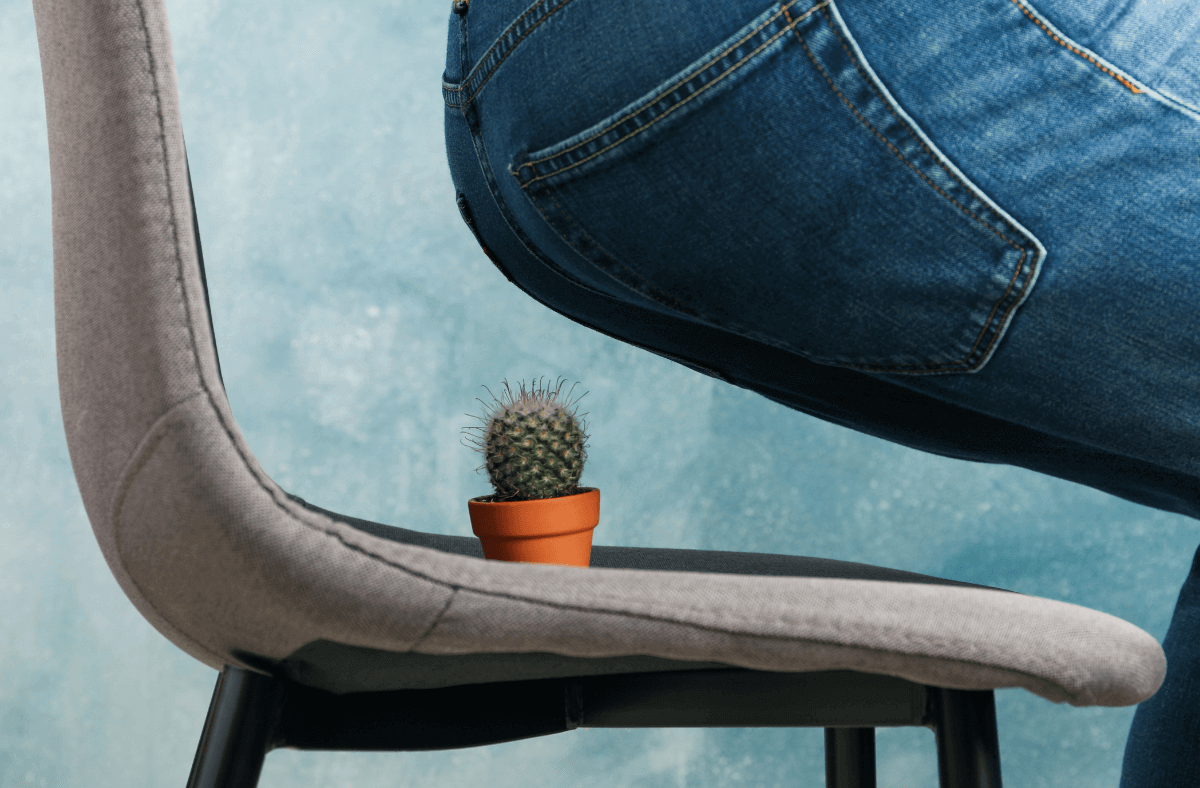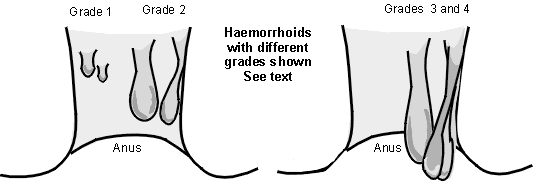
Today, piles or hemorrhoids are affecting more and more people in India due to some or other reasons. As per the report, around 10 million people in India suffer from this painful and fast-spreading disease.
Various studies have claimed that every second individual comes across piles at some point in time between 45 to 65 years of age worldwide.
In this section, we are going to help you know basic details about hemorrhoids.
Hemorrhoids or piles
Hemorrhoids are present in all individuals. These are the cushion-like tissues filled with blood vessels – at the end of the rectum – just inside the anus area.
However, when we denote “having hemorrhoids or piles” – it usually means having symptoms such as itching or bleeding due to enlargement of hemorrhoids.
- Anus – It is the opening where the gastrointestinal tract ends and stool leaves the body.
- Rectum – Above the anus, there is a section of the digestive tract called the rectum where stool is held before it passes out of the body through the anus.
- Anal canal – It is the terminal portion of the large intestine – located between the rectum and anus.
The anal canal has three anal cushions of blood vessels at a 3rd, 7th, and 11th o’clock position. These cushions help in maintaining anal continence and passage of stool.
However, due to certain conditions like age, constipation, pregnancy, or poor lifestyle – these blood vessels sometimes become wider and engorged with more blood than usual.
The engorged veins and the overlying tissue may then form into one or more swellings which are termed as piles.
What causes piles?
The hemorrhoids or piles can be developed due to the increased pressure in the lower rectum. Due to the pressure, the anal veins may may bulge or swell.
There are several factors that exert pressure and damages the thin walls of the blood vessels, like;
- Straining during bowel movements
- Sitting for long periods of time on the toilet
- Having chronic diarrhea or constipation
- Passing of hard stool
- Being pregnant
- Having anal intercourse
- Eating a low-fiber diet
- Less water intake
- Regular heavy lifting
- Acidity
- Heredity
Passing age can also be the one of the risk factors in causing hemorrhoid damage. Aging causes the supporting tissues of blood vessels to weaken.
Nowadays, improper choices in diet and poor lifestyle are considered as one of the strongest reasons in developing the condition of hemorrhoids.
- Alcohol
- Tobacco
- Spicy Food
- Fasting
- Obesity
As we shared, the hemorrhoids are present in all individuals. However, when it starts symptoms like itching or possibly you observe bleeding, we call it having hemorrhoids. It is due to the enlargement of hemorrhoids.
The symptoms
The swollen hemorrhoids may come out of anus and can even be seen. This condition is called protruding or prolapsed hemorrhoid. In some cases, you may not notice any symptoms.
Piles or Hemorrhoid problems cause various symptoms. The mild symptoms include;
- Itching
- Mucus discharge
- Sometimes a painless bleeding
- Burning sensation in the anus
Usually, small piles are painless. However, if the hemorrhoids get larger in shape it may cause severe symptoms and can be more painful.
The symptoms of larger hemorrhoids make it feel like;
- Something is pushing against the anus or like there is something in that area.
- You can not sit properly. Sitting becomes very uncomfortable.
- People might also feel like their bowel isn’t really empty, although they have just gone to the toilet.
- Mucus or stool might come out by accident too, particularly when passing wind. This may irritate the skin around anus.
What are its types?
Piles or hemorrhoids can be categorized into either internal or external piles. Possibly, some individuals may develop internal and external piles at the same time.
Internal hemorrhoids
They form above the junction between the anus and rectum (anorectal junction). Internal piles are deeper and located between 2-3 cm above the opening of the anus. They are the more common type.
External hemorrhoids
They form below the anorectal junction – under the skin around the anus. External piles start off nearer the surface, below a point 2-3 cm inside the anal canal. External piles occur on the outside edge of the anus.
Both internal and external hemorrhoids might remain in the anus or can protrude outside the anus. The size of the protrusion may vary (1).
On the basis of size, position, and severity; hemorrhoids can be classified into 4 categories. They are
- Grade 1: These are slightly enlarged hemorrhoids that can not be seen from outside the anus. There is swelling on the inner lining of the anal canal. They are the most common type.
- Grade 2: Grade 1 hemorrhoids further enlarge to this type or more. They come out of the anus while passing stool or – less commonly – during other physical activities – but go back inside again on their own.
- Grade 3: Hemorrhoids that come out of the anus when you go to the toilet or do other physical activities, but don’t go back inside on their own. They can be pushed back inside, though. Sometimes you may feel one or more small lumps coming out from the anus.
- Grade 4: Hemorrhoids that are permanently coming outside the anus and you can not push them back inside. Usually, a small bit of the anal lining comes out of the anus too. This is also known as rectal prolapse.

Bleeding is the most common symptom of having piles. You may notice bright red blood during defecation in the toilet pan or with stools. If you observe, it is very important to diagnose the severity with your doctor. Do not try to diagnose and treat on your own.
The piles can cause pain or bleeding – in such cases, seek your doctor’s help immediately.
———————————————————————————————————————————————————-
Laser treatment for Piles at LOTUS hospital
Patient Hospital Stay: Laser Treatment – 24 Hours / Surgical Procedure 3-7 Days
Pain (Post-Operative): Laser Treatment – Low / Surgical Procedure – High
Recovery Time: Laser Treatment – 3 Days / Surgical Procedure – 7 to 15 Days
Recurrence: Laser Treatment – Low / Surgical Procedure – High
Complications: Laser Treatment – Low / Surgical Procedure – High
Lotus Hospital, Nagpur provides the best Piles surgery and treatment in Nagpur with utmost care. With a commitment to quality, a dedicated team of professionals, technological excellence at an affordable cost our organization has emerged to be the most reliable center for General, Laparoscopic, and Minimal Invasive Surgeries, Medicine, Gynecology, Obstetrics, Onco-Surgeries.
Dr. Kanhaiya Chandak is one of the best surgeons for piles treatment in Nagpur, Maharashtra, Madhya Pradesh, and Chattisgarh. He has performed more than 4000 surgeries successfully at Lotus Hospital since Inception.

